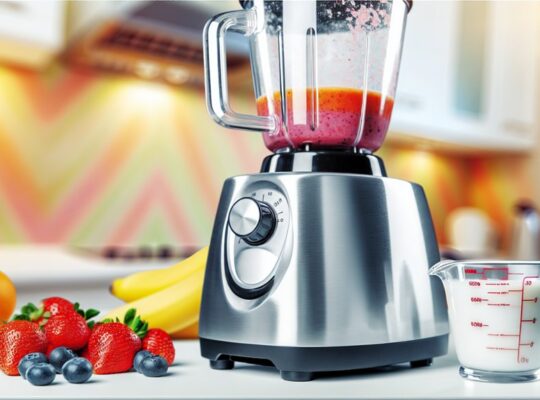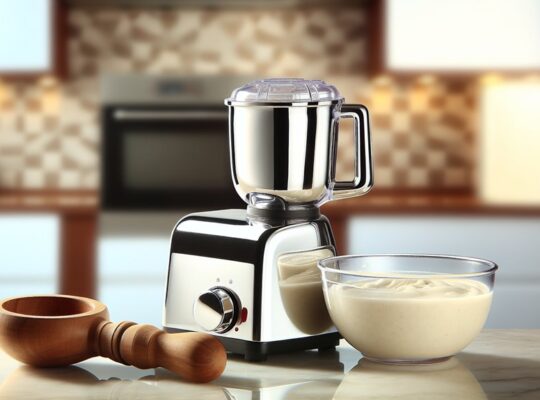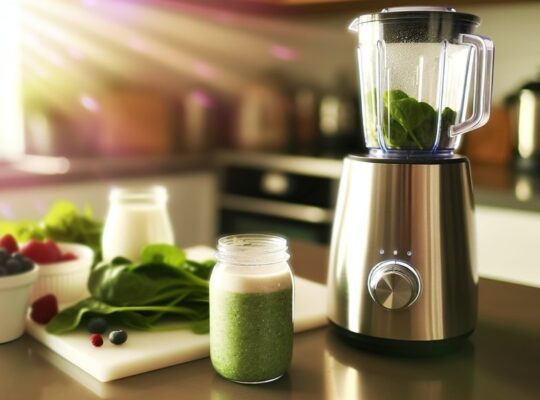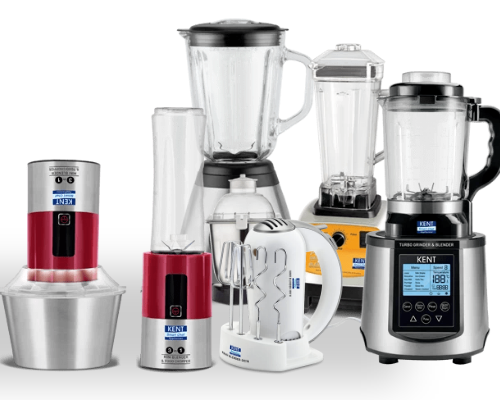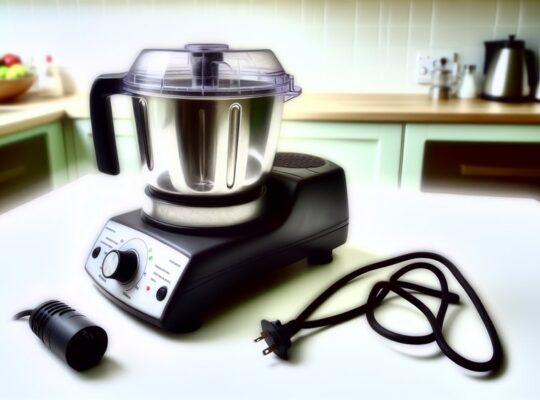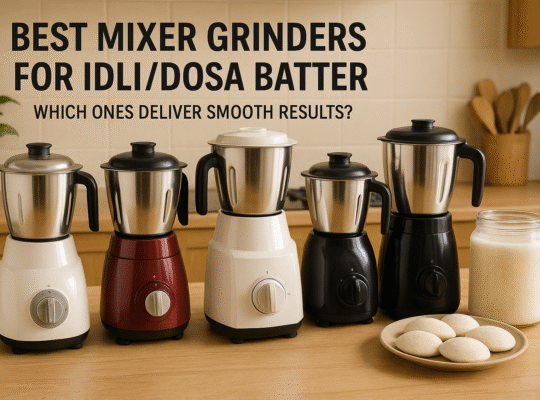When you’re selecting a mixer grinder for a family of four or more, focus on a robust motor (700–1000 W) and a wet-grinding jar of about 1.5–2.0 L, with durable stainless steel components. You’ll want reliable thermal protection, overload cutoffs, and noise control, plus easy maintenance. Performance data and real-world load tests should guide you, since steady output matters as workloads grow. Stay with us as we break down the best configurations and practical implications.
Key Takeaways
- Prioritize 700–1000W motor power with 1.5–2.0 L jar capacity for consistent, heavy-duty grinding in large families.
- Ensure BPA-free or stainless steel jars with tight-sealing lids and durable blade geometry for hygiene and efficiency.
- Look for overload protection, lid interlocks, and thermal safety to prevent damage during extended use.
- Favor machines with multiple jars and high throughput, plus reliable RPM stability to minimize heat buildup.
- Check ease of cleaning, maintenance access, and a maintenance log to sustain performance over time.
How to Choose a Mixer Grinder for Busy Households
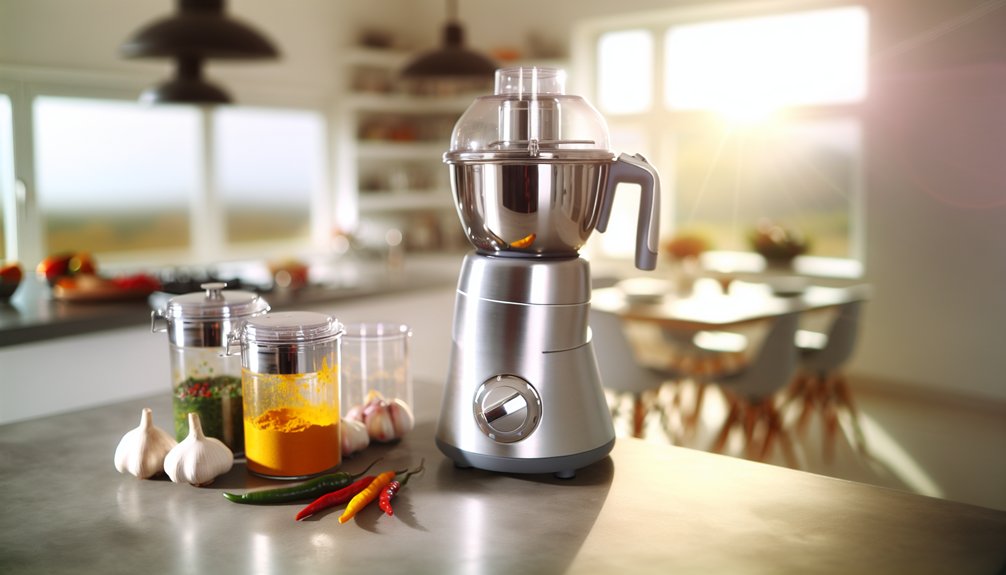
Choosing a mixer grinder for a busy household demands a data-driven approach: prioritize capacity, motor power, and throughput to minimize grinding time and reduce cabinet clutter. You should quantify bowl size in liters, evaluating how many daily portions you prepare. Compare motor ratings in watts with real-world efficiency, not peak specs, to estimate sustained performance under load. Look for overload protection, thermal cutoffs, and automatic restart safety to prevent overheating and damage. Material quality matters: stainless steel jars resist corrosion and contamination, while tight-sealing lids prevent splatter. Assess noise levels and vibration controls, since prolonged use affects safety and concentration in kitchens with frequent activity. Finally, guarantee compatibility with common accessories and step-by-step cleaning routines to maintain hygiene and longevity. Safety features provide critical protection during extended use and help prevent damage when multiple tasks are handled simultaneously.
Top Features to Consider for 4+ Members
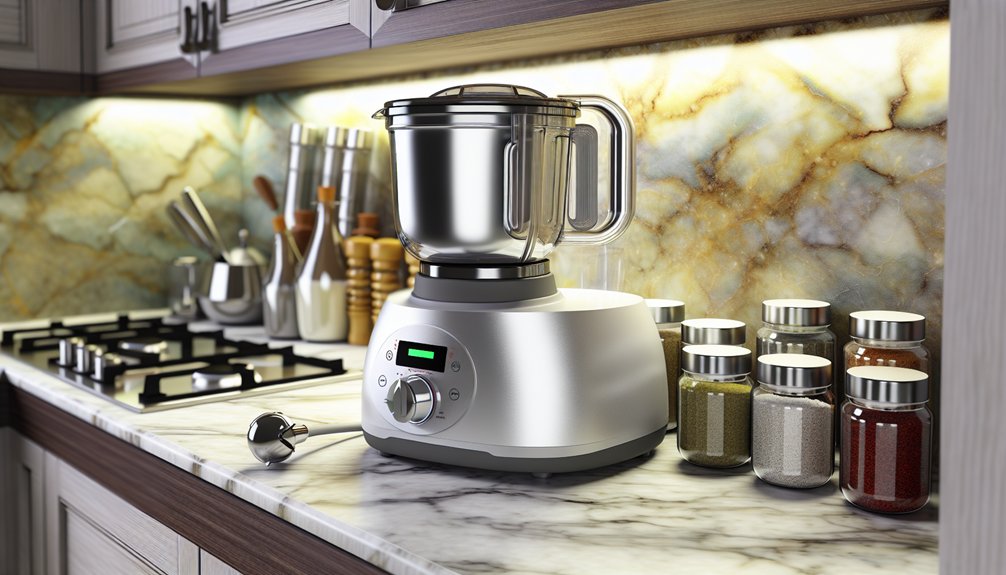
For 4+ member households, capacity and throughput become dominant metrics, but you can’t neglect how that capacity is delivered. You’ll want a grinder that matches sustained load with consistent RPM, minimizing torque spikes that can overwork bearings. Look for clear duty cycle specs and thermal protection that activates before overheating, not after. Safety features matter: overload cutoffs, lid interlocks, and non-slip feet reduce risk during operation. Material quality matters too—dedicated blades with corrosion resistance, and jars that maintain safe grip under load. Noise tolerance isn’t cosmetic; decibel ratings correlate with motor stress and user comfort. Evaluate control interfaces for reliability under frequent use, and ascertain easy-access cleaning to prevent residue buildup. Finally, confirm warranty conditions align with heavy, daily usage expectations. Duty cycle
Best Motor Power and Jar Capacity for Large Families
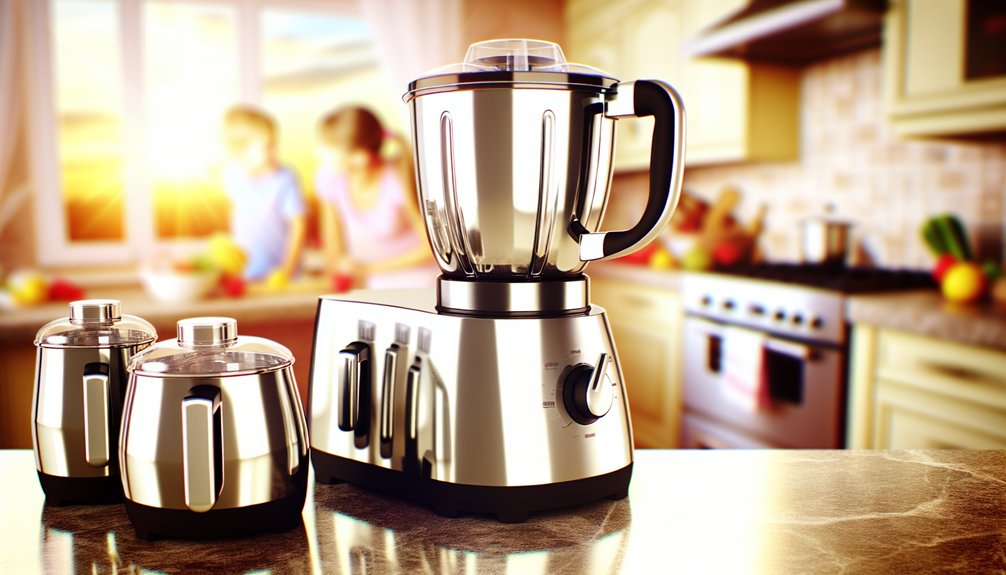
Motor power and jar capacity are the two anchors of performance for large families: you’ll want a motor with sustained RPM under heavy loads and jars sized to keep pace with daily meal prep. In practice, target models offering 700–1000 watts for continuous duty, with overload protection and thermistor safeguards to prevent thermal shutdown during prolonged grinding. Look for multiple-speed options and a high-torque start to minimize stall under dense ingredients. Jar capacity should cover family-scale batches: 1.5–2.0 liters for wet grinding and at least 0.8–1.0 liters for dry grinding, with durable, BPA-free plastic or stainless steel. Blade geometry matters: layered, stainless steel blades reduce caking and improve consistency. Verify jar compatibility with accessories and a clear service life estimate from the manufacturer. Safety interlocks are non-negotiable as highlighted in the knowledge, and 1000 watt mixer grinders offer features like Stone Pounding technology and MaxxJuice Extractor that enhance performance for spice authenticity and smoothies.
Maintenance Tips for Longevity and Easy Cleaning
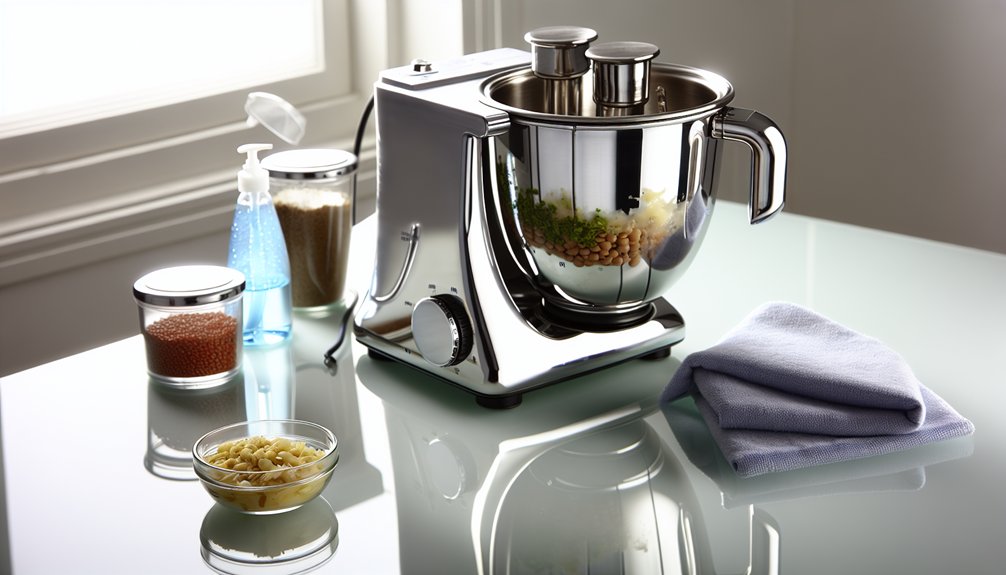
Maintaining performance when you’ve got a motor running heavy loads and multiple jars means prioritizing routine care that prevents buildup and heat stress. Regularly inspect seals and gaskets for wear, replacing damaged parts to avoid leaks and motor strain. Clean blades and jars after each use with warm, soapy water and a soft brush; avoid abrasive pads that could dull edges or scratch surfaces. Run a short, empty cycle with cold water and a food-safe cleaner monthly to minimize mineral deposits, especially in hard-water environments. Wipe the exterior with a damp cloth and dry thoroughly to prevent corrosion. Never submerge motor components or cords; unplug before handling. Establish a maintenance log tracking dates, parts replaced, and observed performance changes for safety and longevity. Proper safety features like overload protection and safety locks, highlighted in reviews and manufacturer specs, contribute to reliable operation quality safeguards.
Real-World Use: Everyday Scenarios and Performance Test Notes
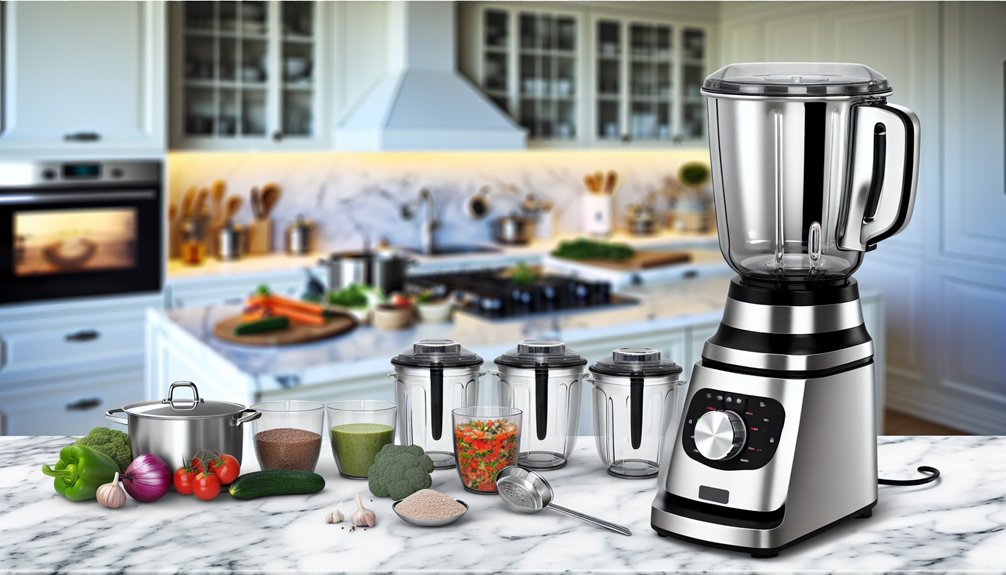
Real-world use reveals how a large-family mixer grinder performs under typical daily demands, highlighting both efficiency and potential bottlenecks in multi-jar setups. You’ll notice throughput varies with load distribution across jars and motor current. In test cycles, pulse- and continuous-mode performance show energy delta and heat buildup, with safe shutoffs marked at predefined thresholds. We compare grind times for coconuts, dals, and batters, recording uniformity, particle size, and texture consistency. Safety notes focus on lid-locked operation, interlock integrity, and thermal protection responses under 1.5× rated loads. Noise levels, vibration, and enclosure temperature are measured to assess user comfort and long-term seal wear. Data indicate that multi-jar configurations introduce torque spikes; best practice is sequencing heavy-duty tasks before lighter ones to minimize overheating risk. The study also reiterates that jar capacity and proper gasket lids help prevent spills during high-stress cycles jar capacity and that material quality (304-grade stainless steel or polycarbonate) supports easier maintenance under heavy use.
Frequently Asked Questions
How to Compare Warranty Coverage Across Brands?
Warranty coverage across brands varies by duration, inclusions, exclusions, and service-terms; you should compare transferability, in-home vs. depot repair, parts availability, and coverage limits, then quantify total cost of ownership and failure-rate data.
Are Noise Levels Acceptable for Daily Family Use?
Yes, noise levels are generally acceptable for daily family use if the mixer grinder operates below 70 decibels on high and under 60 decibels on typical speeds, ensuring safe communication and reduced hearing risk during meals.
Which Mixer Grinder Suits Small Apartments With 4+ Members?
You should choose a compact, high-efficiency mixer grinder with 4+ jar options, powerful motor, and safety features like overload protection and non-slip feet, ensuring stable operation in small apartments for your family’s daily blending needs.
What Replacement Parts Are Commonly Needed and Why?
Common replacement parts are blades, gaskets, seals, couplings, and coupler washers, plus capacitors and seals for motors. They fail due to wear, overheating, and overload. Regular inspection prevents motor burnout and guarantees safe, reliable operation for large families.
Can Any Model Double as a Food Processor?
Yes, some models double as a food processor, but confirm attachment compatibility, motor power, and safety certifications; expect dedicated blades, pulse functions, and processing capacity to differ, and guarantee overload protection and stable operation under heavy loads.
